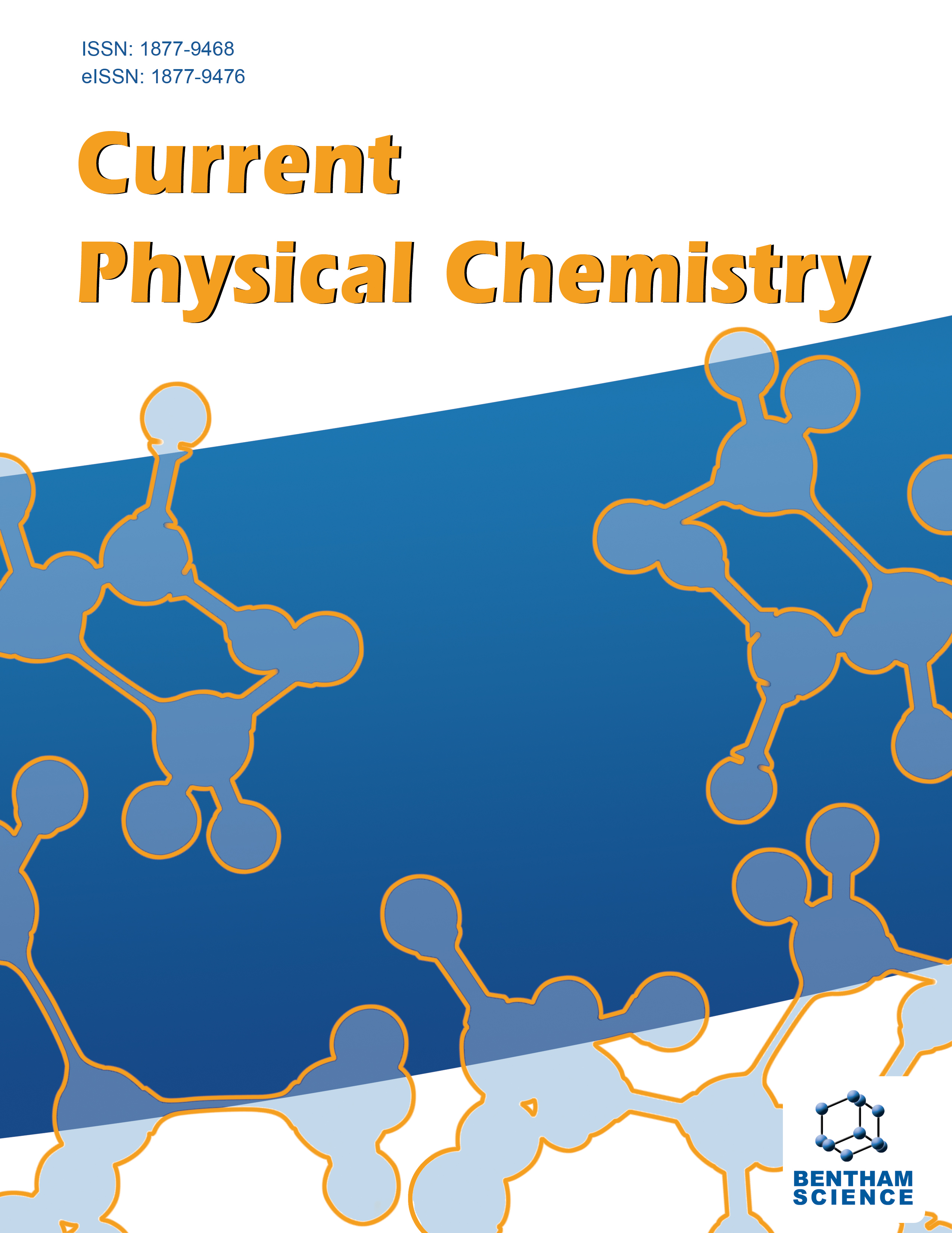- Home
- A-Z Publications
- Current Physical Chemistry
- Previous Issues
- Volume 11, Issue 1, 2021
Current Physical Chemistry - Volume 11, Issue 1, 2021
Volume 11, Issue 1, 2021
-
-
Molecular Modeling of Substances Isolated from the Essential Oil of the Species Drimys angustifolia and Drimys brasiliensis
More LessBackground: Carry out an in silico study of chemical substances isolated from the species: Drimys angustifolia and Drimys brasiliensis. Methods: A theoretical study of global reactivity, QSAR descriptors, MEP construction and molecular docking was performed to analyze the interaction of substances with acetylcholinesterase of Drosophila melanogaster and the prediction of skin permeation and toxicological properties of t Read More
-
-
-
Development of the Room Temperature Protocol Based on Room Temperature Ionic Liquids and Surfactant Ionic Liquids for the Synthesis of Derivatives of 2-Amino-Thiazoles and Thermo- Physical Analysis of the Synthesized Derivatives Using TGA-DSC
More LessAuthors: Chandrakant Sarode, Sachin Yeole, Ganesh Chaudhari, Govinda Waghulde and Gaurav GuptaAims: To develop an efficient protocol, which involves an exploration of the catalytic potential of both the room temperature and surfactant ionic liquids towards the synthesis of biologically important derivatives of 2-aminothiazole. Objective: Specific heat capacity data as a function of temperature for the synthesized 2- aminothiazole derivatives has been advanced by exploring their thermal profiles. Methods: The ther Read More
-
-
-
Specific Heat Capacity Estimations for Biologically and Medicinally Important Compounds: Lidocaine Hydrochloride, Clove Oil and β-Piperine Using the DSC Technique
More LessAuthors: Gaurav Gupta, Vasim Shaikh, Sachin Kalas and Kesharsingh PatilAim: To study the specific heat capacity for biologically and medicinally important compounds, namely, lidocaine hydrochloride, clove oil and beta-Piperine using the DSC technique. Background: One of the main problems in the science of medicine is the application of drug molecules with limited solubility in water and in biofluids. Solubility is related to the chemical potential of the solutes involved, which imparts free energy Read More
-
-
-
Surface Bacterial Adhesion Study of Novel Ternary PVC/ Polyester/ Bentonite Clay Nanocomposite Films
More LessAuthors: Mohammed I. Abbas, Nandha G. Sountharapandiyan and Shabeer T. KhudusBackground: The spread of bacterial infections has become a growing concern to human beings particularly in the medical and food packaging industry. Such infection may also result due to the adhesion of microbes from the environment. Polyvinyl chloride is a versatile polymer used in medical devices and food packaging materials, need to be modified to enhance antibacterial activity. Objective: The main focus of the p Read More
-
-
-
Micellization Behaviour of Cationic Surfactants in the Presence of Food Additives: Conductance and Spectroscopic Investigations
More LessAuthors: Sonika Arti and Neha AggarwalAim: The micellization behavior of cationic surfactants has been studied in the presence of food additives. Objectives: Micellization behaviour of cationic surfactants, Cetyltrimethylammonium Bromide (CTAB) and Tetradecyltrimethylammonium Bromide (TTAB) has been studied in water and in various concentrations of salts (food additives) L-glutamic acid, sodium propionate, sodium citrate tribasic dihydrate and disodium tar Read More
-
-
-
Investigation of Structural and Thermoelectric Properties of Bismuth Selenide Thin Films
More LessAuthors: Harsha Sharma and Yogesh C. SharmaBackground: Thermoelectric material with high performance and low cost is the basic need of today. Bismuth selenide is a thermoelectric material. A set of bismuth selenide thin films having different stoichiometry ratios varying Bi/Se ratio from 0.123 to 0.309 have been prepared. Objective: The present work deals with the synthesis and characterization of various thin films of bismuth selenide. The thermoelectric properties of thi Read More
-
-
-
Structural and Morphological Characterization of CdS Nanoparticles
More LessAuthors: Manish Dwivedi, Vijay Tripathi, Dhruv Kumar and Dwijendra K. GuptaAims: CdS nanoparticles are an attractive material having applications in various fields like pigment in paints, biotag for bioimaging and many more optoelectronic as well as biological applications. The present study aims to synthesize and characterize the CdS nanoparticles to make it applicable in different areas. Objectives: Preparation of CdS nanoparticles by using simple and facile chemical methods and further physical and str Read More
-
Most Read This Month
Article
content/journals/cpc
Journal
10
5
false
en


